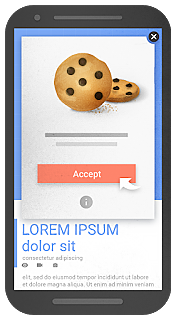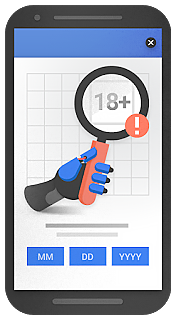When Google talks about interstitials, they are referring to overlay messages that appear on top of page content. These messages often contain offers, information regarding cookie usage, age queries and hints that there is an app available for the sit
What are interstitials?
An interstitial is an ad that is displayed above the actual content on a page. In addition to advertising messages, interstitials often also contain information about the use of cookies and other information.
The best way to explain what interstitials are is to use examples. In this example, the page on searchenginejournal.com has loaded, and after a short period of time has passed, the content is overlaid with a call to participate in a webinar.

What types of interstitials are there?
Interstitials can be generally divided into informational and promotional advertisements, and their size can also differ. There are interstitials that overshadow and take up the entire page, and there are those that only occupy a small part of the page.
Interstitials as informational ads
The most common type of information-related interstitials are cookie notices. These notices usually only take up a maximum of 20% of the screen and are legally obligatory.
Mobile websites which offer an app will often promote their apps in interstitial messages. Here, too, the ads usually take up no more than a fifth of the screen.
The legally stipulated age check for certain online offers is also often carried out via an interstitial.
Promotional advertising via interstitials
At first glance, delivering advertising via interstitials looks like an effective means of circumventing ad blockers, which recognise and hide most pop-up ads. However, interstitials are used for self-promotion as well as conventional advertising.
For example, it has become common practice on some online marketing sites to display an interstitial when a user moves the mouse over the ‘close tab’ button.
Problematic interstitials
From the consumer’s point of view, almost all interruptions of their reading flow can be classified as problematic. As a website operator, however, one must also be aware that Google, for example, penalises the excessive use of interstitials on mobile pages with decreases in rankings.
Standards for the creation and use of various ad formats can be found on the Coalition for Better Ads website: https://www.betterads.org/standards/.
Conclusion
Interstitials that are displayed as the page is loading, or only after users have taken a quick glance at the page are annoying, as are interstitials that appear when users attempt to close the page. You should, therefore, always put on your visitor’s glasses if you feel that your own strategy calls for the use of interstitials.

